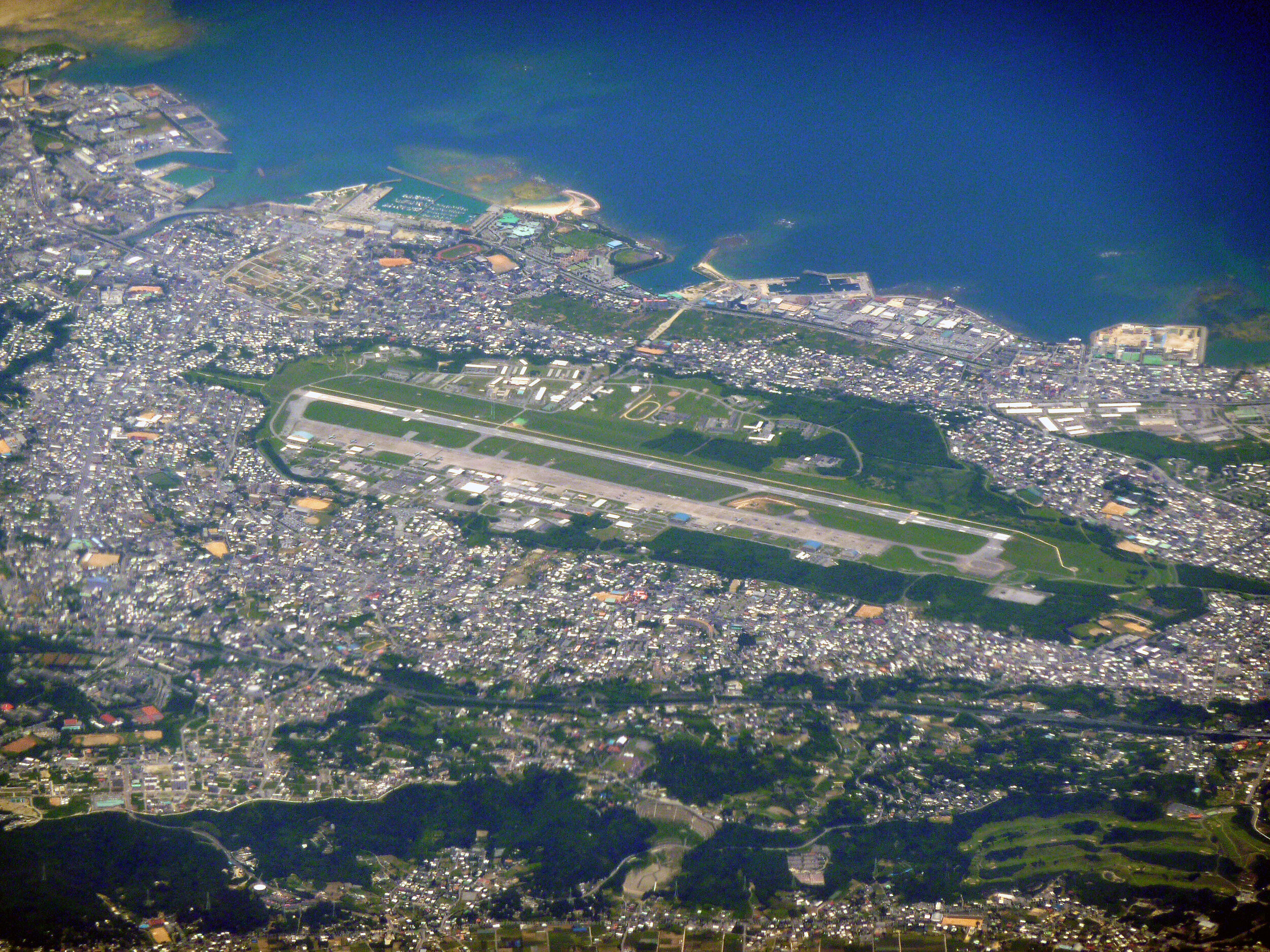Taiwan Jingu
Emergence of Contestation: 1901
Taiwan's general protector shrine, Taiwan Jinja, was established six years after Taiwan came under Japanese control. The three Pioneer Kami were enshrined in the first seat of the shrine, while a second seat enshrined Prince Kitashirakawa-no-miya Yoshihisa, who had died in Tainan in 1895 of malaria, after leading a successful pacification campaign against the remaining Qing loyalists in Taiwan. Like others in Taiwan, the shrine itself was handed over to the Republic of China after 1945, but remained largely unaltered until the 1970s. Then, as part of a broader policy of removing the traces of Japanese colonization and fostering patriotism, the shrine was razed and replaced with the towering Taipei Grand Hotel in 1973, which showcased northern Chinese (as opposed to southern Chinese or Taiwanese) architecture.
Desecration or Veneration: The Legacy of Shinto Shrines at the Borders of Imperial Japan - Karli Shimizu
Futenma Airbase
Emergence of Contestation: 2015
The relocation of the Futenma airbase to Henoko in Naga is accompanied by a spectrum of reactions which cannot easily be covered by the duality of simply being "for" or "against" the move. In the case of Komeito politicians, there exists a marked split in the positions of the party's local representatives ("against"), and the national representatives (reluctant support), which demonstrates that the common perceptions of left-wing and right-wing politics fail to cover the complexity of the socio-economic and political reality, as well as the intricate dynamics of local, national, and international issues.
Negotiating Historical Memory in an Era of Purity Politics - Anne Mette Fisker-Nielsen
Meiji Shrine
Emergence of Contestation: 1912
The Meiji Shrine today is a popular tourist destination, and a site for a wide variety of events and festivities. However, the Shrine also functions as a mnemonic site with various audiences, and is attached with a complex web of meanings, - at times seemingly contradictory, - from the veneration of the Meiji emperor to a symbol of postwar democratisation. The Shrine is a centre not only for religious life, but also for historical consciousness.
Forgetting War and Remembering Progress at the Meiji Shrine - Peter Zarrow
Hokkaido Jingu
Emergence of Contestation: 1869, 1895, 1945, 1949-1987
The Shinto shrines built over time along the expanding Imperial Japanese border carried different associations in different locations across varying points in time. While the shrines in Hokkaido retained a religious association even after the war and were linked to the pioneer narrative, in colonial Taiwan the shrines were primarily locations of patriotic worship of the dead, and, as they became set as secular after the war, they transformed into symbols of a multicultural Taiwan.
Desecration or Veneration: The Legacy of Shinto Shrines at the Borders of Imperial Japan - Karli Shimizu








